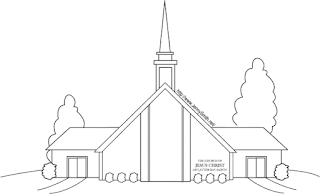
When to use in Sacrament Meeting
Every ward and branch is different and has a different philosophy on sacred music and musical numbers. Some organists utilize free accompaniments often, while others (probably most) have never heard of them. Before planning to use a free accompaniment, present the idea to your local Priesthood leaders and/or music chairman to get them on board.
Free accompaniments should be utilized sparingly. I like to think of them as a musical number, turning the congregation into a large choir. My philosophy is that free accompaniments can be utilized up to once a month as a rest hymn. Others feel differently.

How to use
In order to use an alternate harmonization, the congregation must be very familiar with the hymn. Additionally, the organist and music director must be very well prepared.
Prior to the hymn, the congregation should be instructed as to how to proceed. For example, "After an interlude, please sing the last verse in unison."

In Conclusion
Free accompaniments can be an effective tool of the LDS organist in bringing the Spirit of the hymn to the congregation, as long as the harmonization is effective and appropriate and doesn't call attention to itself. Listening to the Spirit is key here.
More Information
Don Cook's handout on free accompaniments
Free accompaniments and audio samples at www.wardorganist.com
A catalog of free accompaniments at www.LDSOrganists.info




No comments:
Post a Comment